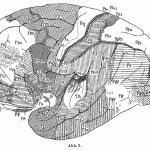Spring 2005 • Around Here Magazine Feature Article
Most of us first learned about hypnosis from a nightclub-type performance. The subject was put into a deep sleep only to become the fool for the watch-swinging
Svengali’s ridiculous post-hypnotic suggestions: “Whenever I say the word ‘cat,’ you will crow like a rooster.”
This false image of hypnosis embodies most of the myths which prevent people from enjoying the healing power of hypnosis. Hypnosis does not require a heavy-lidded dullness on the part of the subject; in fact, the “trance’ state” is a condition of focused concentration, and most people in trance state are unusually aware and responsive.
Secondly, hypnosis is not in the control of the hypnotist but of the subject. Psychologist Stanley Fisher, who has worked with thousands of patients in trance state, insists, “All hypnosis is self-hypnosis; the subject is always in control; the choice of whether to cooperate is his alone.”
Although hypnosis may involve suggestion, suggestibility is neither the primary attribute or the primary advantage of trance state. Milton H. Erickson, who developed the major 20th century breakthrough in hypnotherapy, promoted hypnosis as the most efficient method of identifying, accessing, developing, and utilizing strengths. Most importantly, hypnosis does not require a hypnotist; virtually anyone can learn easily to place himself in a relaxed trance state.
The Brain’s Subconscious
Current understanding of how the brain works reveals the importance of communicating with the subconscious. Stanford psychologist Philip Zimbardo describes the brain as a “phenomenal double agent.” It does one thing while convincing you that it’s doing something else altogether. The brain, it seems, is not a single unit of mind, but rather a confederation of highly specialized compartments, or “mind modules,” each dealing with a separate topic, he points out.
For instance, there is a part of the brain devoted to recognizing faces, but another devoted to remembering names, and yet another specialized in storing past conversations. Atop this jumble of sometimes coordinated activity sits a region in the left side of the brain that is called the “interpreter.” It is this function which explains our behavior to ourselves, and which gives us our sense of choice and identity. The interpreter works overtime to provide coherent explanations for what we do.
The interpreter is precious to us. It gives us our sense of self; but it often does no’t know why we really do things this, the subconscious knows. By dissociating from the conscious mind and its interpreter, hypnosis allows communication with the subconscious mind, which truly “understands” the reasons why we do things, without intellectualizing them as the conscious mind does.
Bad Habits
Thus, hypnosis is highly effective at eliminating bad habits like smoking and overeating. It allows a person to bypass the conscious rationalizations and “cover stories” that permit self-destructive behavior, and to directly address the part of the brain that “benefits” from the habit. Hypnosis also eliminates value judgments, which often reinforce bad habits. The person who says. “I hate myself for eating this ice cream,” is actually strengthening her feelings (anger, frustration, weakness, self-doubt, etc.) that promoted the urge to smoke or overeat in the first place. A person cannot successfully command her subconscious not to allow smoking. However, she can enlist the good instincts of the subconscious as part of the process of choosing not to smoke.
Pain Control
Hypnosis is also effective for pain control.
Experiment after experiment demonstrates that people in a trance state experience pain far less even than when they’re not in this state. In one example, a young woman kept her arm submerged in a bucket of ice water without describing her discomfort as greater than level I (on a scale of 1-10).
Her non-hypnotized counterparts had reached “10” many minutes before and removed their arms from the water. Hypnosis and its counterpart “biofeedback” are standard elements of the treatment regimen for chronic pain.
Healing Benefits
Hypnosis has been shown to speed postsurgical recovery in many patients. Case studies and research indicate the following benefits from preoperative hypnosis and suggestions given under anesthesia. They include: a reduction in the normally required amounts of anesthesia and pain killers, more rapid wound healing, earlier return of physiological functions, and shorter convalescence.
It is one physician’s view that this occurs because “your body can’t tell the difference between a surgeon and a mugger, unless you help it to do so.” That is, hypnosis persuades the body to cooperate with the surgeon, reducing the tension and stress which lead to postoperative pain and slow recovery. Stanley Fisher makes this interesting observation:
“Patients who have used self-hypnosis tend to end up with the thinnest scars. It is as though the scalpel, when entering the body, cuts through soft, flowing tissue rather than tense tissue that is bound to rip.”
Establishing Its Place
Hypnosis has emerged from the shadows of psychology, and other healing disciplines. Its usefulness as our means of communicating with the subconscious seems unlimited. With minimal training, practically anyone can learn and apply the simple steps of self-hypnosis …. a healing art for everyone.
In hypnoanalysis, a trained therapist uses gentle suggestions to help remove limillng beliefs and construct positive, life-affirming ones. Whatever goal is set, therapy is decided upon and self-directed by the client wilh the counselor acting as a guide. Step by step, a hypnoanalyst guides each person in uncovering the origin of the person’s problem, undoing the subconscious knot, and freeing himself to live a healthier, more productive life.
Around Here Magazine • 2005
